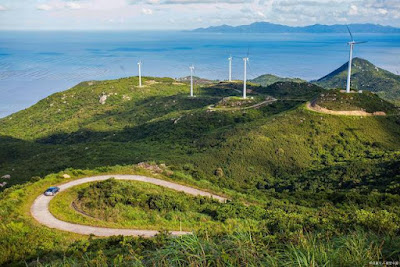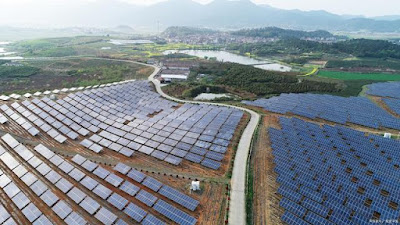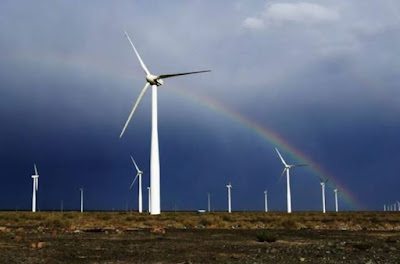During the 14th Five-Year Plan period (2021-2025), China will continue to accelerate the development of solar and wind energy as part of a transition to green energy that is carbon neutral by 2060.
By 2030, the government will increase the total installed capacity of wind and solar power to more than 1.2 billion kilowatts. As part of a broader push for clean energy generation and storage, it will also cover 50 percent of the nation's rooftop solar-panel buildings, according to a joint statement from the National Development and Reform Commission and the National Energy Administration on Monday.

In recent years, China has made great achievements in the field of solar and wind energy. The installed capacity of solar and wind energy ranks among the highest in the world. According to the document, the share of solar and wind energy has been rising steadily and its cost has been gradually declining.
However, there are still problems with clean energy consumption and grid access, while land resources are also limiting the development of clean energy in the country, the report said.
In order to accelerate the construction of a clean, low-carbon and efficient energy system in China, as China strives to peak carbon dioxide emissions by 2030 and achieve carbon neutrality by 2060, it is necessary to further develop solar and wind energy facilities to ensure this, the report said. Both sectors play a key role in ensuring the nation's energy security.
Luo Zuoxian, head of intelligence and research at the Sinopec Economics and Development Research Institute, said renewable energy will continue to play a role in helping Beijing achieve climate change as wind and solar power plants accounted for more than half of China's new electricity generation last year. play a key role in the goal.
Luo Zuoxian further stated that the layout of terminal consumption plays a key role in the construction of China's modern power system.
Along with supply-side reforms, it is necessary to study the demand-side response, which will ensure a smooth transition to green energy in the country, he said.
China added a record 549 gigawatts of solar power plants last year, up 14 percent from 2020, the National Energy Administration said earlier.
According to the statement, China will also speed up the construction of solar and wind power generation capacity in the Gobi Desert and other arid regions, and strive to increase renewable energy consumption to take advantage of the abundant solar and wind energy resources there.
It will also further develop the potential of rooftop solar power generation in rural areas, while encouraging distributed solar and wind energy projects in rural areas as well as industrial parks and buildings eligible for such projects.

The statement also called for further strengthening of the country's power system regulatory capacity and flexibility. It highlights support for grid companies so they can better cope with more new energy sources. It also encourages the construction of pumped-storage projects to ensure efficient power generation.
Pumped-storage hydropower is the most commonly used energy storage method today. It saves excess electricity by pumping water from a lower reservoir to a higher reservoir at night when electricity demand is low, and then releasing it to generate electricity during the day when electricity demand is high.
In order to achieve carbon emission reduction targets, China will also increase financial support for the development of wind and solar power generation, including enriching green financial products and services, and strengthening support for green bonds and green loans for new energy projects. The company will also further study the incorporation of new energy projects into real estate investment trusts or REITs, the statement revealed.




No comments:
Post a Comment